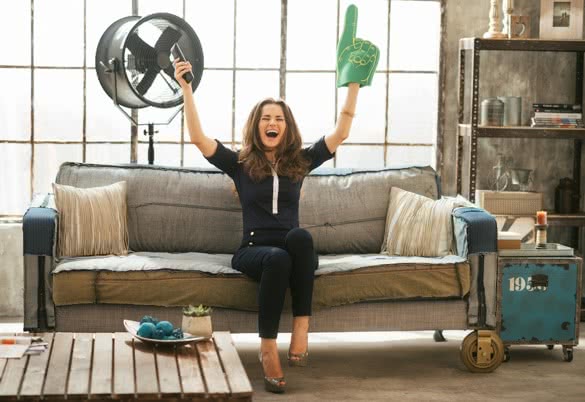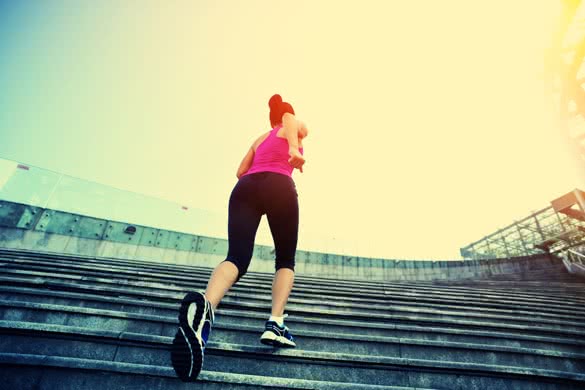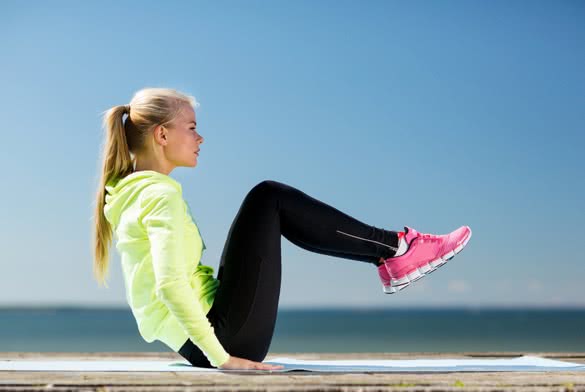The Women’s World Cup is in full swing. If you’ve been inspired to kick a ball around yourself, here is everything you need to know about the beautiful game and how to get yourself ‘football fit.’
Where to Start?
As a complete beginner, first off you will want to know the basic rules. One of the best starting points is to check the internet and watch a football match on TV or live. Don’t worry too much about every intricate detail at the start–just the basics are fine; the rest will come with experience and joining a club.
Basically a team is made up of 11 players (and substitutes), one of who is a goalkeeper. Quite simply, the goal is to get the ball through your team and score without the other side intercepting it and doing the same. There are also lots of extra details, such as the offside rule and set pieces, but they will come with time and experience. A referee helps to keep a game in order.
Next, you need to kit yourself up. There are lots of football boots on the market and some great styles and colors. You will need: shin pads, long football socks, boots, shorts and t-shirts (sport/technical material).
Even if you don’t want to learn how to play football, or join a team, you might have seen what great shape the women playing in the World Cup are in and fancy copying some of the exercises they do to train! To be a footballer, you need to be fast, strong and fit enough to run around for 90 minutes or longer if extra time is awarded.
Football is much more than skill. Here’s how to improve your fitness specifically for football. Even if learning the skills and rules of the game is not your thing, there’s no reason why football fitness training can’t help you to get fit generally and help with other sports.
Explosive Power
A footballer needs to be able to perform small rapid sprints over a game of 90 minutes (or more). They need to be able to jog, but turn from a walk or light jog to a fast and explosive sprint. If you are not a natural sprinter, it is something that can be improved.
Get your running kit on and head out on a jog. Bring a timer with you (you can usually download one on your phone) and every few minutes set a burst of 20 seconds to run as fast as you can before returning to a jog.
This training will help to improve your recovery time as well as your pace and power in short bursts. Another way is to use a football pitch and jog the lengths of the pitch and sprint the widths.
Lower Body Strength
You need to be able to kick a ball. Far. For this, you will require some lower body strength and muscular endurance to be able to run, dribble with the ball, pass and shoot. One of the best ways to strengthen your lower body using only your bodyweight is to do squats and lunges as part of your fitness routine. Get the technique right to gain the most from the exercises and to avoid injury.
Once you improve, add some hand weight or explosive squats (add a jump) or switch lunges (jump and switch legs). These are plyometric moves and great for football conditioning. If you prefer to use weights and go to a gym, the leg press is a great machine to strengthen the muscles in your legs and glutes.
Circuit Training
Circuit training, especially High Intensity Interval Training, is one of the best training sessions for football fitness. These sessions work on max input/effort, rapid recovery and a full body workout. The aim is to condition your whole body so that you can move around a football pitch quickly in an agile, strong and flexible way.
Even if football is not your thing, the training is great for weight loss and general fitness. Football is a sport that requires a mix of athletic ability and circuit training can mix up the activity and timing using equipment or just your own bodyweight.
Balance
Balance is another key requirement of a good footballer. You need to be able to kick a ball while standing on one leg, which sounds easier than it is. One way to increase your balance and poise is to take up an activity like yoga or pilates.
Balance comes from your core muscles (all those muscles in your mid-section, back and front). To strengthen your core, try exercises such as sit ups/crunches, plank and toe reaches. Another great balance exercise is to put a small block or sandbag on the floor and hop on and off it on one leg as quickly as possible. Be careful not to twist your ankle if you get tired.
Agility
Footballers need to be aware of their bodies and able to move quickly. This means quick thinking, quick feet and being agile. One of the best agility exercises is to have one person call out commands that you’ve agreed to (left, right, floor, sky) for you to perform as quickly as you can. This will work on your listening, which is key in any team sport, and your reflex action.
You need to be able to make a decision on how best to move your body, when and where to and to do so quickly and sharply. It is a good one for keeping the brain alert! A goalkeeper requires lots of agility to make decisions on how best to save a shot and jump or reach in to position.
Flexibility
Good flexibility is needed to avoid injuries. One of the injuries football players are prone to is hamstring problems. Training needs to work on a good balance between muscles, so work equally on quadriceps and hamstrings, for example (front and back of upper legs), to avoid imbalance.
Yoga is a great way to improve muscle tone and flexibility, but you can also perform regular stretching routines in your own home.
Hold a stretch for 30 seconds and don’t rush. Work on stretching all parts of your body from the neck to the ankles.
A good investment is a foam roller. Have a look online for some stretching exercises and core workouts that incorporate a foam roller and bands. A roller helps to break down any ‘knots’ in your muscles by working on trigger points, and eases injuries or potential muscle tightness that might cause injury.
Fitness Testing
You might all groan at this part, but fitness testing is a great way to work to your max and see how you are improving. Some of these tests include balance tests (standing on one leg with the other raised for as long as possible while remaining steady) and the beep test (reaching each side of the area before the beeps which get faster in each level and work on your endurance and recovery).
Recovery
Football can really take its toll on your body. It’s an all-over workout, so one of the best post-match recoveries is an ice bath! Cold, but very effective. Alternatively, if freezing water is not your thing, a good cool down, stretch and plenty of protein will help the muscles recover quickly.
Experience
Having managed a women’s football team for a number of years, it is highly recommended to boost skills and fitness. The club was a beginner’s one and everyone was learning from scratch. Fitness and football aside, it is a great way to make friends and socialize as well as feel the team spirit that comes with a team sport.
It will being out a competitive side you didn’t realize you had and you’ll ache in places you didn’t realize you had muscles, but there is something about running after a ball that makes you forget just how great an exercise form it is. If I haven’t convinced you, switch on the TV and watch the rest of the Women’s World Cup to get inspired.
Do you play football? Do you have any great exercises to share with You Queen readers? Any football fitness tips? Let us know!















Add Comment